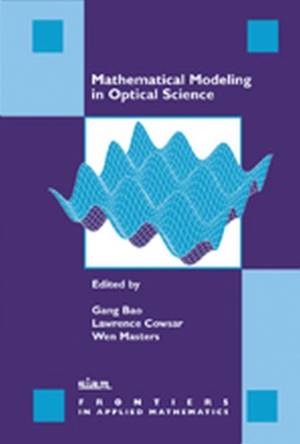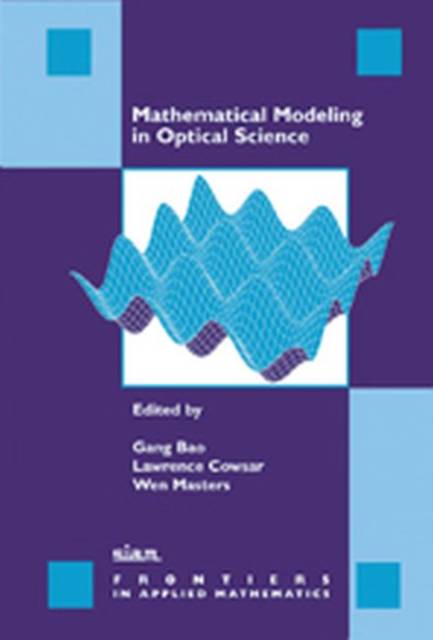
Door een staking bij bpost kan je online bestelling op dit moment iets langer onderweg zijn dan voorzien. Dringend iets nodig? Onze winkels ontvangen jou met open armen!
- Afhalen na 1 uur in een winkel met voorraad
- Gratis thuislevering in België vanaf € 30
- Ruim aanbod met 7 miljoen producten
Door een staking bij bpost kan je online bestelling op dit moment iets langer onderweg zijn dan voorzien. Dringend iets nodig? Onze winkels ontvangen jou met open armen!
- Afhalen na 1 uur in een winkel met voorraad
- Gratis thuislevering in België vanaf € 30
- Ruim aanbod met 7 miljoen producten
Zoeken
Mathematical Modeling in Optical Science
€ 90,95
+ 181 punten
Omschrijving
This volume addresses recent developments in mathematical modeling in three areas of optical science: diffractive optics, photonic band gap structures, and waveguides. Particular emphasis is on the formulation of mathematical models and the design and analysis of new computational approaches. The book contains cutting-edge discourses on emerging technology in optics that provides significant challenges and opportunities for applied mathematicians, researchers, and engineers. Each of the three topics is presented through a series of survey papers to provide a broad overview focusing on the mathematical models. Chapters present model problems, physical principles, mathematical and computational approaches, and engineering applications corresponding to each of the three areas. Although some of the subject matter is classical, the topics presented are new and represent the latest developments in their respective fields.
Specificaties
Betrokkenen
- Uitgeverij:
Inhoud
- Aantal bladzijden:
- 349
- Taal:
- Engels
- Reeks:
- Reeksnummer:
- nr. 22
Eigenschappen
- Productcode (EAN):
- 9780898714753
- Verschijningsdatum:
- 1/01/1987
- Uitvoering:
- Hardcover
- Formaat:
- Genaaid
- Afmetingen:
- 152 mm x 228 mm
- Gewicht:
- 834 g

Alleen bij Standaard Boekhandel
+ 181 punten op je klantenkaart van Standaard Boekhandel
Beoordelingen
We publiceren alleen reviews die voldoen aan de voorwaarden voor reviews. Bekijk onze voorwaarden voor reviews.










